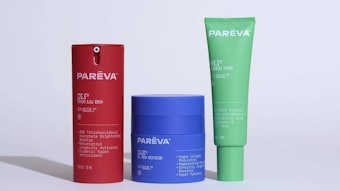Beauty retailing and beauty consumers are changing, and "curation," a current retail buzzword, is one of the strategies helping stores to thrive in this changing environment.
What is Curation?
Curated stores feature an edited product mix, generally cross-brand, cross-price band and characterized by unexpected product combinations. Curation is more than simple "product mix tailoring"though; it has a much stronger aspirational element. The word itself is borrowed from art galleries and exhibitions, so in a retail context it implies that the items have been chosen by an expert, a "best-in-class" selection.
At its best, curation offers more than the products consumers already want, it offers them products that they should want. For this sort of strategy to succeed, there has to be a strong element of trust—consumers have to believe that the curator is recommending the right products, and that the curator is someone whose style they should want to emulate.
Harvey Nichols Uses Industry Insiders to Curate BeautyMART
One of the strongest examples of a curated store is currently the BeautyMART boutique within U.K. department store Harvey Nichols. It was launched in September 2012 under the control of two industry insiders, Millie "Ruby and Millie" Kendall and Anna-Marie Solowij, a former beauty director of British Vogue. Their personally selected product mix features everything from retro classics (4711, Batiste dry hair shampoo, Badedas) to mainstream names such as Revlon and Bourjois, and high-end niche brands, including Zelens and CB I Hate Perfume, at price points between £1.50 and well over £100.
The traditional department store format has not been doing well in beauty retailing in recent years. In 1999, 12% of all beauty and personal care product sales went through department stores; today, less than 9% of sales go through the channel. Although competition from the Internet has made some impact, pressure from more contemporary types of stores, particularly drugstores and beauty specialist retailers, are playing a major part too.
By launching BeautyMART, a self-service, cross-brand boutique, Harvey Nichols hoped to tap into a new generation of consumers more comfortable with a drugstore-style environment, but giving up the sales counter model meant missing out on the opportunity to introduce them to new products and nudge the price points upwards. Instead, Harvey Nichols looked to its curators to create a relationship with consumers using trusted, familiar brands and then tempt them with new products on nearby shelves, backed up by cross-brand advisors. BeautyMART has now been extended into vending machines and online, offering Harvey Nichols even more access to a new consumer base.
Who Else Can Curate?
Although Harvey Nichols used industry insiders to add extra credibility to its curated store, celebrity curation is still surprisingly rare and could well be an area with more to offer. There is certainly precedent: Asos.com was started to help consumers find outfits like the ones chosen by their favorite celebrities, essentially making the celebrities unofficial curators of the site. Bloggers and Vloggers already offer a form of curation through product recommendations, advice and reviews, and also have potential to be great curating partner for the right retailer. Even retailers themselves can curate successfully, especially if they have good brand equity. Net-A-Porter’s recent introduction of beauty products under the "Quintessential Edit" tag was a great example of a retail brand using its trusted position to bring fresh products to its customers through curation.
How Can it Help Retailers?
For in store-based retail, curation offers retailers the opportunity to subtly guide consumers within a self-service environment, making it a key strategy for channels such as department stores, which are finding the beauty counter sales advisor model increasingly incompatible with the tastes of modern consumers. Online, curation has another key function: to help consumers navigate the vast, dizzying, amount of choice at their fingertips but, crucially, without making them feel that their choice has been limited in any way.
In a preview of topics in her "Keeping Traditional Distribution Channels Relevant in the Digital Age" presentation scheduled for InnoCos Europe (June 4, 2013), Branston provides an overview of "curation" and strategies helping retailers to thrive in a changing environment.










